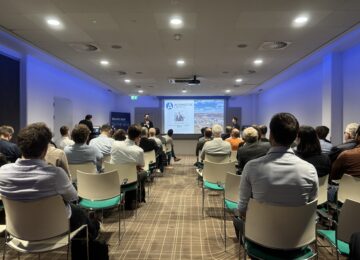Successful first knowledge session mobile storage: quick win, but underexposed
A vibrant industry has emerged in the Netherlands around mobile energy storage, with dozens of companies serving many different types of customers. Consider parties who have always had a acute energy need had, such as construction sites, festivals and temporary housing, as well as to parties who, because of the transportation shortage on the power grid, had a bridging need such as electrifying companies, solar farms or grid operators themselves.
Although this sector offers many opportunities for Dutch industry and grid operators, that potential is not widely known at present. To change this, Energy Storage NL and its members have developed a position paper drawn up, and on December 3 a first knowledge session organized with Skoon (Peter-Paul van Voorst tot Voorst) as chairman. The session focused on two topics: flexibility tenders and the PGS37-1 (Safety Directive).
Flextenders
In the first part, Emma Gerritse of Stedin in response to the tender issued for controllable power in Utrecht. In doing so, Stedin is anticipating an expected physical overload of the electricity grid in the winter of 2026-27, as a result of growing electricity consumption by current connected parties (so-called 'autonomous growth'). In addition to contracting regulating capacity from existing connected parties, Stedin also anticipates that new 'flex' will be needed. Here, the grid operator expects that there will sometimes be too little room to charge batteries through the grid, and thus there will also be a need for traditional solutions such as gas or diesel generators. Among other things, the group discussed that it would help the market to have a better understanding of the profiles on which the demand is based, so that hybrid combinations can be offered that As cost-effective and sustainable as possible be. Here, mobile storage has the advantage of being able to switch locations between "congestion seasons": during off-take congestion in winter, and generation congestion in summer.
Safety (PGS 37-1)
In the second part, Benjamin Oudot and Bianca van Kooij of Rijkswaterstaat (Information Point Living Environment) how batteries are viewed from the perspective of spatial policy. After a consideration of the organizational frameworks - i.e. the European Battery Regulation and interdepartmental Battery Strategy - the group exchanged experiences with the implementation of the safety directive PGS 37-1. Among other things, it was discussed that more specific consideration should be given to the characteristics of lithium iron phosphate (LFP), the current industry standard. It was also emphasized that there are still very large differences in interpretation between the various safety regions. Many projects do not materialize because no permit is granted, and to a large extent this has to do with unfamiliarity and uncertainty. In that context, a good dialogue with the security regions spearheaded.
Energy Storage NL looks back on a successful knowledge session with good substantive discussions and the shared need for a follow-up. The position paper and presentations given can be found for ESNL members via the download buttons below.





